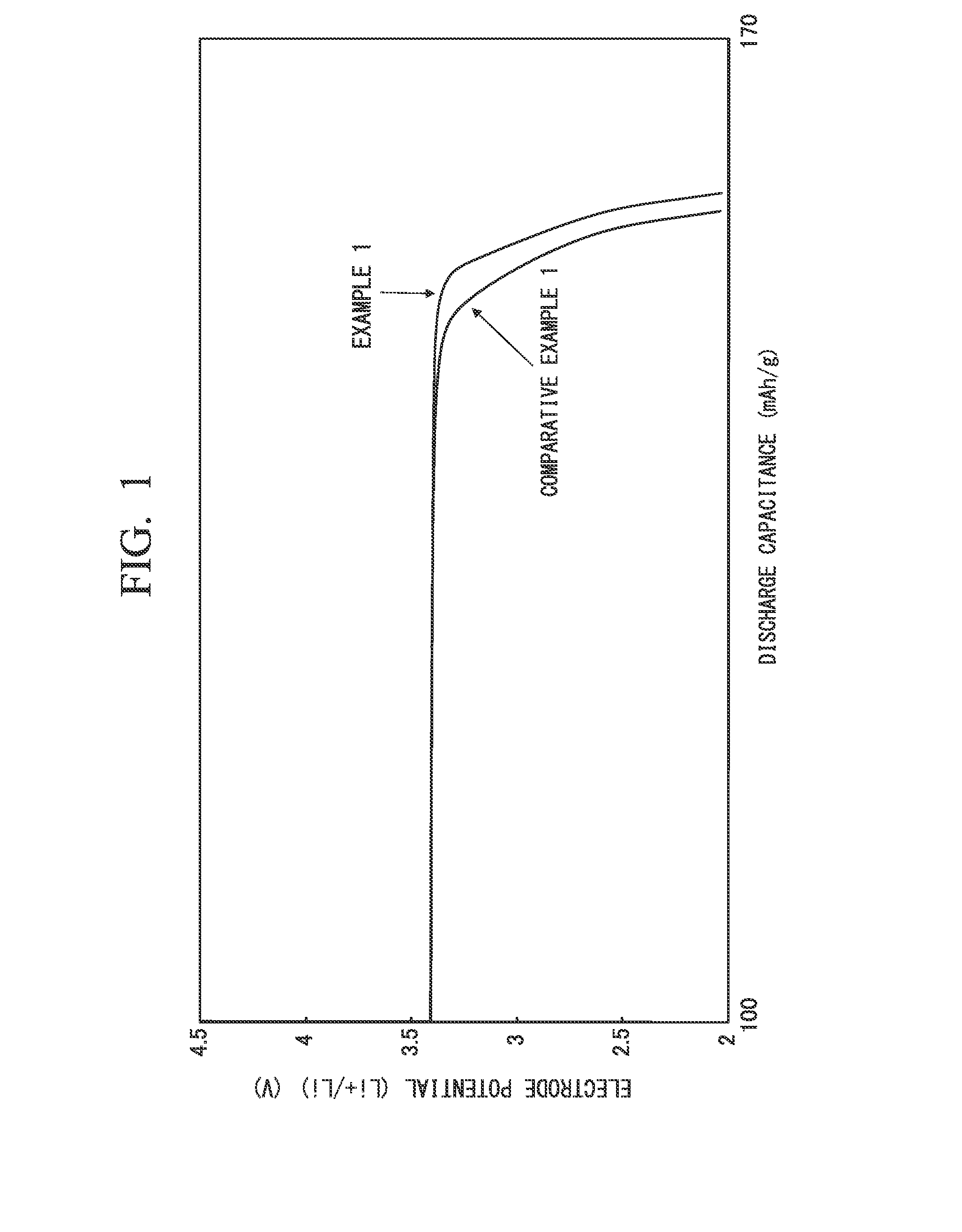Electrode material, electrode and method of manufacturing electrode material
- Summary
- Abstract
- Description
- Claims
- Application Information
AI Technical Summary
Benefits of technology
Problems solved by technology
Method used
Image
Examples
example 1
Production of an Electrode Material
[0107]Lithium acetate (LiCH3COO, 4 mol), iron (II) sulfate (FeSO4, 2 mol) and phosphoric acid (H3PO4, 2 mol) were mixed with water (2 liters) so as to obtain a total amount of 4 L, thereby preparing a homogeneous slurry-form mixture.
[0108]Next, the mixture was accommodated in an 8 L pressure-proof closed container, and hydrothermally synthesized at 120° C. for one hour.
[0109]Next, obtained sediment was washed using water, thereby obtaining a cake-form precursor of an electrode active material.
[0110]Next, the precursor of the electrode active material (150 g in an equivalent solid content amount), an aqueous solution of polyvinyl alcohol obtained by dissolving polyvinyl alcohol (PVA, 20 g) as the organic compound in water (100 g), methanol (50 g), glycerin (50 g) and zirconia balls (500 g) having a diameter of 5 mm as medium particles were put into a ball mill, the stirring time of the ball mill was adjusted so that D90 / D10 of the particle size dist...
example 2
[0146]An electrode material and a lithium ion battery cathode were produced in the same manner as in Example 1 except that a liquid mixture of the precursor of the electrode active material (150 g in an equivalent solid content amount), an aqueous solution of polyvinyl alcohol obtained by dissolving polyvinyl alcohol (PVA, 20 g) as the organic compound in water (100 g), methanol (20 g) and glycerin (80 g) was used as a raw material for the slurry being sprayed and dried, and the electrode material and the lithium ion battery cathode were evaluated. The evaluation results are described in Tables 1 and 2.
[0147]Meanwhile, in Example 2 as well, similarly to Example 1, a voltage drop at the final phase of discharge was observed.
example 3
[0148]An electrode material and a lithium ion battery cathode were produced in the same manner as in Example 1 except that a liquid mixture of the precursor of the electrode active material (150 g in an equivalent solid content amount), an aqueous solution of polyvinyl alcohol obtained by dissolving polyvinyl alcohol (PVA, 20 g) as the organic compound in water (100 g), methanol (80 g) and glycerin (20 g) was used as a raw material for the slurry being sprayed and dried, and the electrode material and the lithium ion battery cathode were evaluated. The evaluation results are described in Tables 1 and 2.
[0149]Meanwhile, in Example 3 as well, similarly to Example 1, a voltage drop at the final phase of discharge was observed.
PUM
| Property | Measurement | Unit |
|---|---|---|
| Length | aaaaa | aaaaa |
| Length | aaaaa | aaaaa |
| Length | aaaaa | aaaaa |
Abstract
Description
Claims
Application Information
 Login to View More
Login to View More - R&D
- Intellectual Property
- Life Sciences
- Materials
- Tech Scout
- Unparalleled Data Quality
- Higher Quality Content
- 60% Fewer Hallucinations
Browse by: Latest US Patents, China's latest patents, Technical Efficacy Thesaurus, Application Domain, Technology Topic, Popular Technical Reports.
© 2025 PatSnap. All rights reserved.Legal|Privacy policy|Modern Slavery Act Transparency Statement|Sitemap|About US| Contact US: help@patsnap.com

